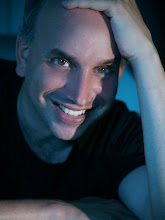Model Bartenders




For many of even the most successful models, modeling is not always a full-time job that pays the rent. That’s the reason why major model markets like New York and LA always seem to have an unusual number of good-looking bartenders, waiters/waitresses and hostesses.
It’s not just coincidence.
For those about to rock the world with their model-good looks, the first step after getting off the Greyhound is always a good agency – and the second step is registering with Model Bartenders.
With placement service in New York, Miami, LA, Chicago, DC and Dallas (and almost any other city upon request), Model Bartenders serves up hot dishes to satisfied clients.
Founder Marc Levine, who has been running Premiere Party Servers since 1988, is a smart cookie who found a niche in the industry.
“About seven years ago, we started getting a lot of calls for our clients requesting a certain look for their events,” he says. “The one thing you can’t do when you have a party in the past was pick your staff. You pick your caterer. You pick your band. You pick your florist. You pick your dress, you pick your tux. The one thing you can’t control or have any say in choosing are the people who serve you. And that’s the one thing that people remember when they’re at an event. A wedding, a bar mitzvah, a store opening, a movie premiere, or any of these events that we’ve been asked to help organize.”
Since its inception, Model Bartenders has provided quality service for clients, as well as a pillar of trust for modeling agencies and models who place there.
Of course, Model Bartenders may not be the only game in town, but, for sure, it is fair game. Of his competition, Levine says, “The problem with a lot of these mom and pop stores that open up left and right is that these guys and girls go to them because a friend of a friend said to go register with them. A lot of time it will take them three weeks, four weeks, a month to two months to get paid. We’ve heard stories of people not getting paid for two months, because they’re taking the word of a friend. The company is not a legitimate company. Somebody is running it out of their house. It doesn’t pay to work for a company that is not a legitimately run company. Here, they get paid every week, they get their W2 forms. We run a very legitimate operation. That’s why the agencies feel very comfortable sending us their staff.
“A lot of agencies send us their people because they trust us. We’ve been in business eighteen years. They know that whoever they send to us, they will get paid properly, they will be treated well, and they will not have to track us down to get paid.”
In the modeling business, this kind of practice is worth its weight in plus models. And any model will tell you that when the rent is due, the rent is due.
“We have had some models work for us for five, six years,” Levine says.
In fact, often it will not be a casting, but it will be an event serviced by Model Bartenders that will land a model a job.
The networking opportunity is as thick as a model’s lashes.
“We work with some really great clients,” Levine says, “and it offers models some really great exposure to some really great events. We do a lot with Fashion Week, and we do a lot of high-end retail, as well as fashion, photography and art-related events. It’s good exposure, and that’s what models need. When they come to New York, they need to be out there. And we give them the opportunity to be out there in an environment that is hard but fun. They meet great people. We’d even have had people hook up and get married.
“We’ve had people land billboards in Times Square, we’ve had people go on cruise ships for six months to sing; we’ve had people in commercials. Many of them are from parties where they met people.”
Although Model Bartenders serves a number of markets, it’s based in the town of the toughest customer.
“New York is a tough place,” Levine says, “but you need to keep a good attitude and enjoy it and have fun doing what you’re doing, knowing that it’s an incredibly competitive field. Go out there and meet, network and have fun. And work with reliable people.”
Still, the networking opportunities stretch from coast to coast.
“It’s fun to know that we’re getting calls from clients all over,” Levine says. “We have a client in Dallas who is going to fly one of our guys to Dallas, because he looks like a young King Tut.”
Not only do the opportunities stretch, but so do the schedules. Model Bartenders is sensitive to the hectic and unusual work calendar of a model.
“We will work our schedule around the schedule of an actor or a model,” Levine says. “We’re geared toward giving our staff the flexibility to work and to align themselves with people that they trust working for.”
This allows for plenty of plenty-hard work, but also the peace of mind of knowing that the bills are getting paid while the career is getting built. It’s the very thing that saves a model from developing worry lines.
Levine is sure of it.
“I’d put my twenty females against the women on Deal Or No Deal anytime,” he says.
For more information, go to www.modelbartenders.com and www.premierepartyservers.com



























